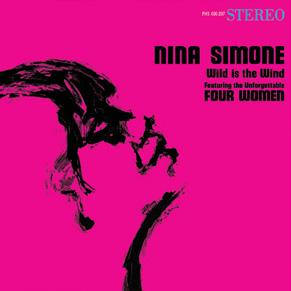Nina Simone: Wild Is the Wind
Stereophile
|April 2024
By all accounts, Eunice Kathleen Waymon, aka Nina Simone, who passed in 2003, was a troubled person and a brilliant artist. Why she was not more acclaimed during her lifetime is a question several recent film projects have tried to answer. Did her fierce stand on civil rights lose her fans?
-

Or was it, as the films have implied, a case of self-sabotage driven by mental illness? Whatever the answer, her inimitable work continues to resonate with ever more force and depth.
Simone was a gifted, aspiring classical pianist who graduated as valedictorian from an integrated private high school and attended Juilliard for a year on scholarship, using her time there to prepare for the entrance exam at the Curtis Institute, from which she was rejected. (Days before her death, Simone would learn that Curtis intended to award her an honorary degree.) Her rejection from Curtis pushed her into jazz. In the mid-1960s, she underwent a radical change in her music and personal beliefs.
Up to that point, she'd played the music business game and stayed on the safe side, trying to widen her appeal with a mix of standards, bluesy numbers, and alsohesitantly-originals. But the murders of Emmett Till and Medgar Evers and the stirring of the Civil Rights movement convinced her of the righteousness of the cause, and she became a leading musical voice in the struggle.
Esta historia es de la edición April 2024 de Stereophile.
Suscríbete a Magzter GOLD para acceder a miles de historias premium seleccionadas y a más de 9000 revistas y periódicos.
¿Ya eres suscriptor? Iniciar sesión
MÁS HISTORIAS DE Stereophile

Stereophile
Buzz Me In
If you like 1970s rock music, particularly hard rock music, something you love was recorded or mixed in a Record Plant studio.
3 mins
January 2026

Stereophile
NuPrime MCX-800AD
IMMERSIVE AUDIO PROCESSOR
11 mins
January 2026

Stereophile
Shanachie Records
The term 'sales' is an anachronism. Today, it's about streaming and ancillary income.\"
3 mins
January 2026

Stereophile
Advance Paris X-CD9
CD PLAYER
11 mins
January 2026

Stereophile
T+A Symphonia for phono; a new NAD M10
Out of the box, the T+A Symphonia streaming integrated amplifier Rogier van Bakel reviewed in the November 2025 issue¹ has two pairs of single-ended analog line inputs.
20 mins
January 2026

Stereophile
Why the Music We Love Feels Different Now
There's a scene in the 2002 movie The Pianist in which Adrien Brody's character, the Polish-Jewish pianist Władysław Szpilman, is hiding in the ruins of a Warsaw villa.
3 mins
January 2026

Stereophile
A tale of two Walters
Acommon theme in this space in Stereophile is the need to reach new audiences and generate broader interest in the hi-fi hobby.
3 mins
January 2026

Stereophile
Eversolo Play CD Edition
ALL-IN-ONE STREAMING PLAYER
12 mins
January 2026

Stereophile
Timeless flights
How many adventurous rock’n’roll bands forged in the late-’60s/early-’70s would have been left by the wayside—or relegated to languish in perpetual cutout-bin purgatory—had it not been for the wide-open programming M.O. of stereo-loving FM radio stations? The Moody Blues could very easily have been one of those sidelined, notched-cover footnotes, but they altered their gameplan when guitarist/vocalist Justin Hayward and bassist/vocalist John Lodge joined the fold a few years after the chart success of “Go Now” in 1964.¹
3 mins
January 2026

Stereophile
You still believe in me
One of my foundational memories of becoming an audiophile was waiting to listen to a pair of speakers at Sound by Singer in Manhattan.
12 mins
January 2026
Listen
Translate
Change font size

